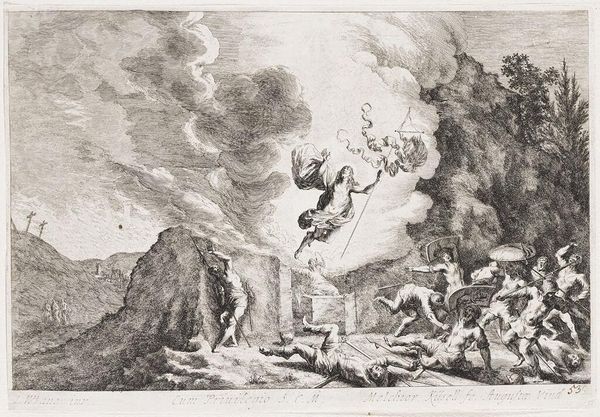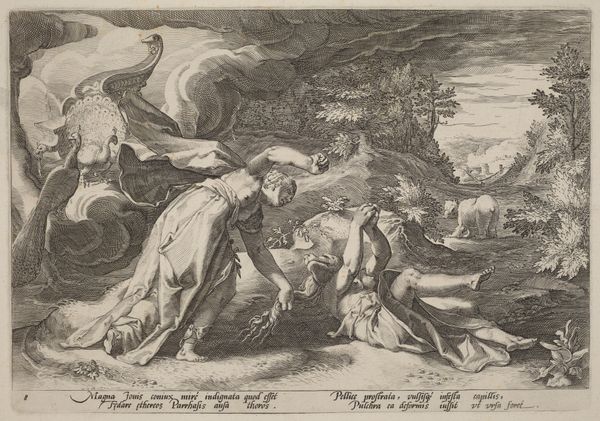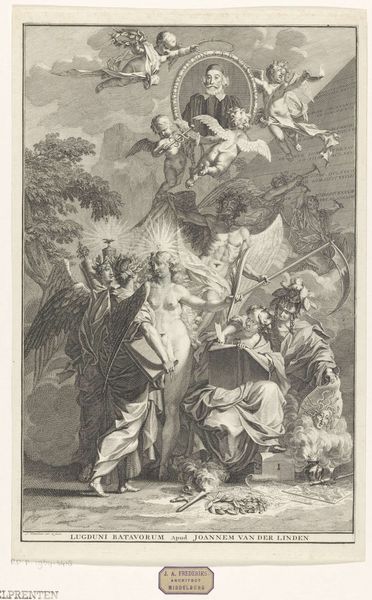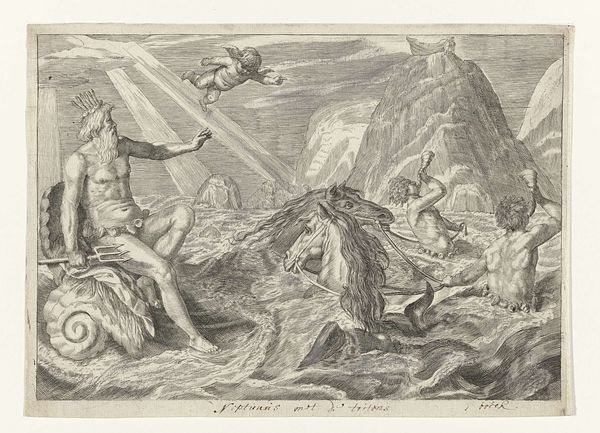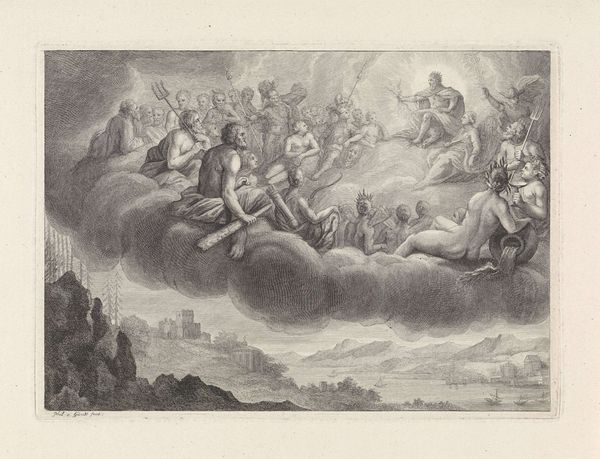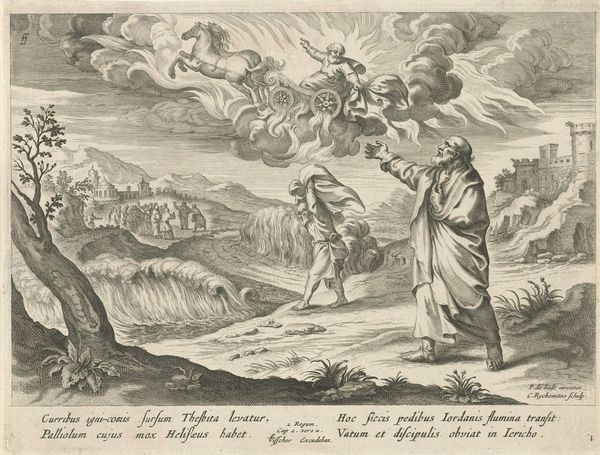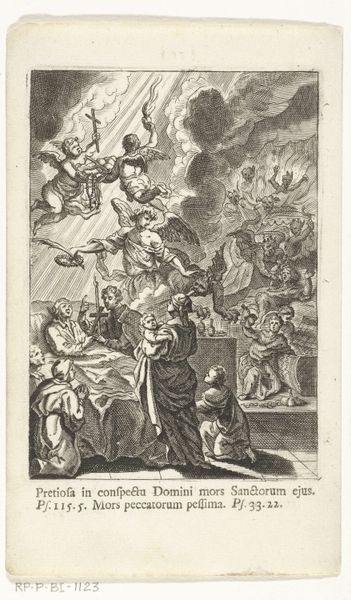
print, engraving
#
allegory
#
baroque
# print
#
old engraving style
#
landscape
#
figuration
#
line
#
history-painting
#
engraving
Dimensions: height 393 mm, width 490 mm
Copyright: Rijks Museum: Open Domain
Curator: Well, I’m immediately struck by how ethereal the whole scene feels. It’s all movement and swirling light. Editor: Indeed. What we are looking at is Pieter Nolpe’s "Elia in de vurige wagen," likely created between 1623 and 1702. It’s currently held in the Rijksmuseum. We can see that it's an engraving, which highlights its function as a mode of readily disseminating stories and ideas. Curator: An engraving, you say? It looks so delicate for a print, almost a ghostly memory etched onto the paper. See how the lines tremble, particularly around the figure kneeling in the lower left? He's overcome with emotion, his robe billowing around him as if touched by the same divine wind that's sweeping Elijah away. The texture created feels really ephemeral. Editor: Notice the layering. It's fascinating how Nolpe builds depth through cross-hatching. This was crucial in prints because, unlike paintings, the tonal range is really dependent on how close the lines are to each other. It’s clever, creating a dramatic scene with pretty limited resources, yet it seems very lush to the viewer, despite everything just being thin lines and simple tools. Curator: Exactly, it’s like alchemy! Ordinary lines, but arranged so perfectly as to convey faith and awe! The empty robe… that hits hard. The materiality emphasizes the transition, right? It goes beyond mere storytelling, it's evoking a felt absence, like trying to hold onto smoke. Do you think there are suggestions of Baroque style here? Editor: Yes, absolutely. The dramatic use of light and shadow and the emotional intensity. It would make a wonderful illustration for a grand book, because while everything looks otherworldly, it would be consumed and circulated within worldly commercial environments. Curator: To be confronted by a fiery chariot drawn by horses… I wonder, when Nolpe created this, did he ever imagine centuries later, a new breed of chariot—cars, buses, vans, motorcycles, would become ubiquitous, would proliferate even beyond our wildest imaginings, their environmental effects, visible to us all? This all makes me see a longing in this scene—a desire to escape. It might have also resonated during the Eighty Years' War in the Netherlands! Editor: It certainly makes me ponder what we consecrate now versus then… thanks for sharing. Curator: The pleasure was all mine!
Comments
No comments
Be the first to comment and join the conversation on the ultimate creative platform.

